Abstract
Using a structured pro forma, 728 out of 775 medical undergraduates at a Nigerian university were surveyed for the prevalence and pattern of drug use. An operational definition of substance abuse was made, and 28 percent of students fell within that criterion. Male abusers (81 percent) exceeded female abusers (19 percent). Substances most commonly abused were alcohol (60 percent), minor tranquilizers (48 percent), tobacco (35 percent), and narcotics (29 percent), particularly codeine. Only 11 percent abused cannabis. While most students were polydrug users, there was a low frequency of daily drug use. A general lifetime (occasional use) prevalence of substance use of 56 percent was found. Drugs consumed on a daily basis were alcohol (2 percent) and tobacco (6 percent). The prevalence of drug use was highest among the fourth and final year students. The majority of students were occasional abusers; there was no evidence of physical dependence.
Full text
PDF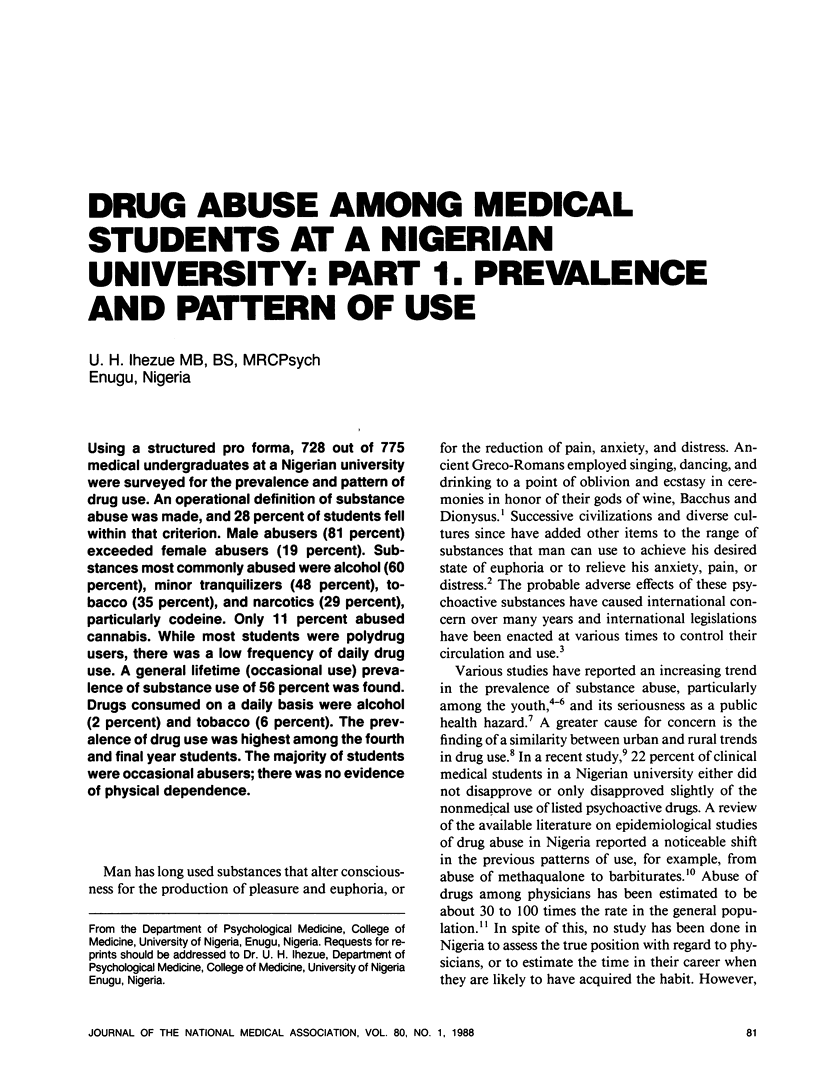
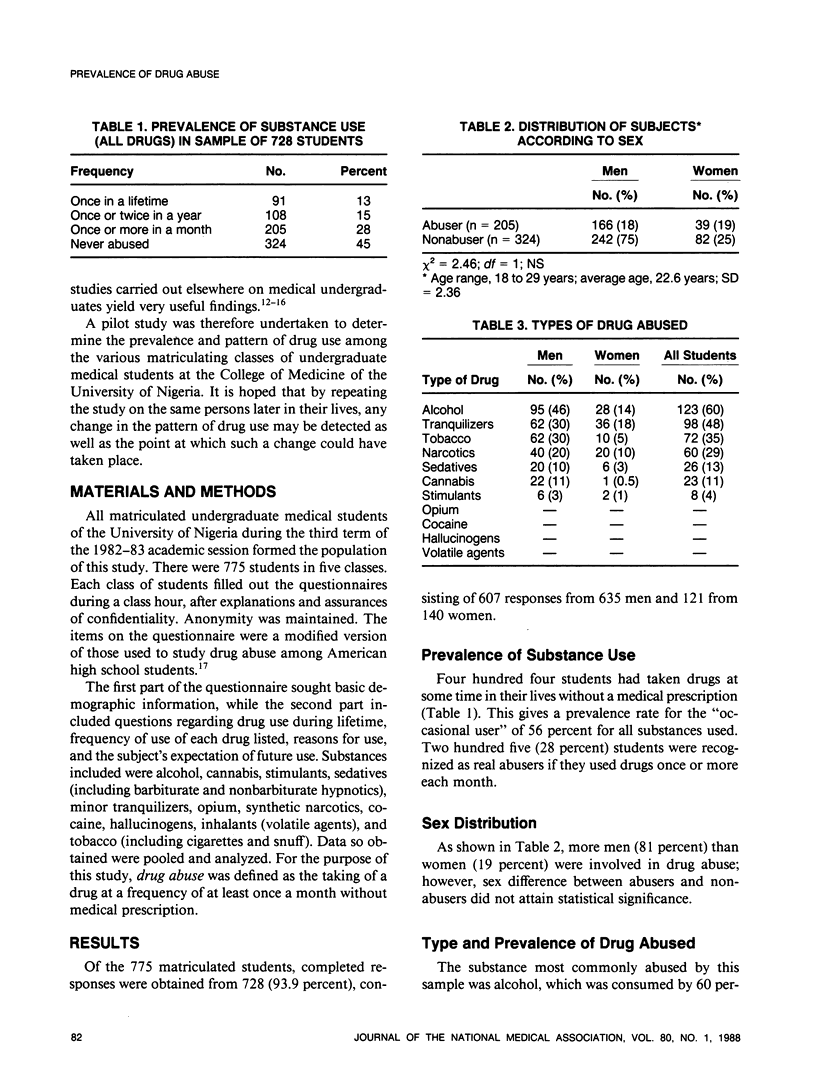
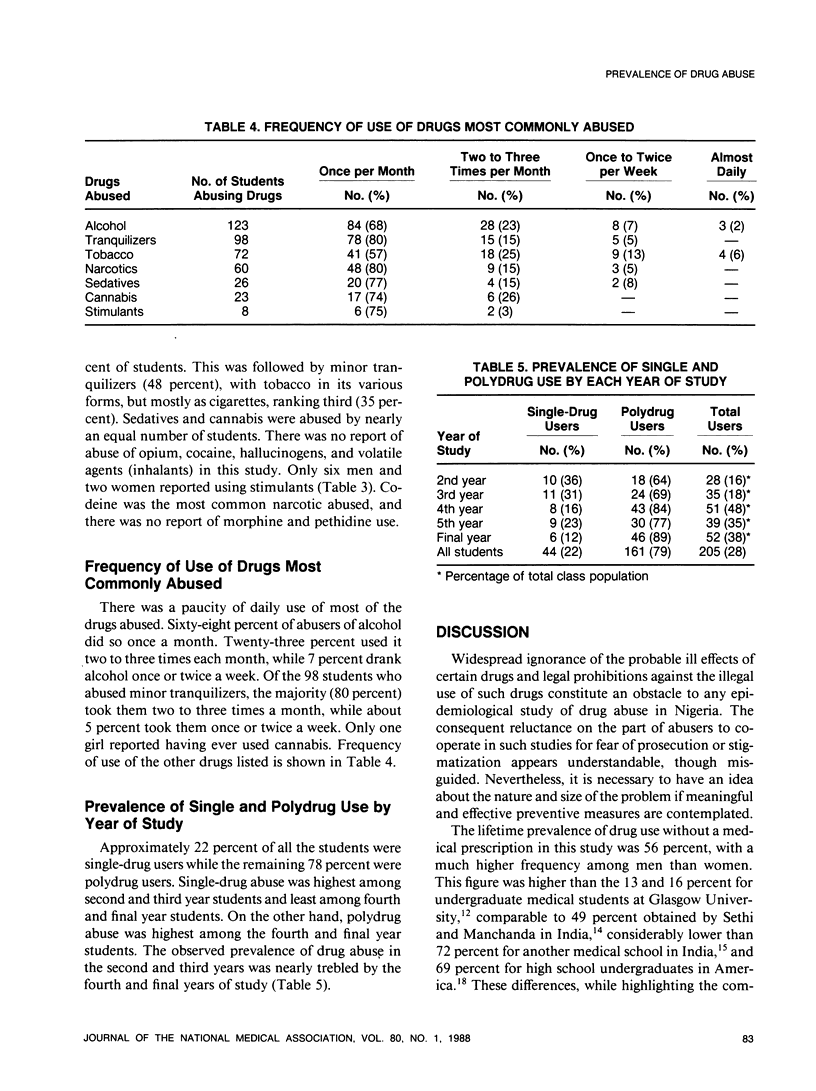
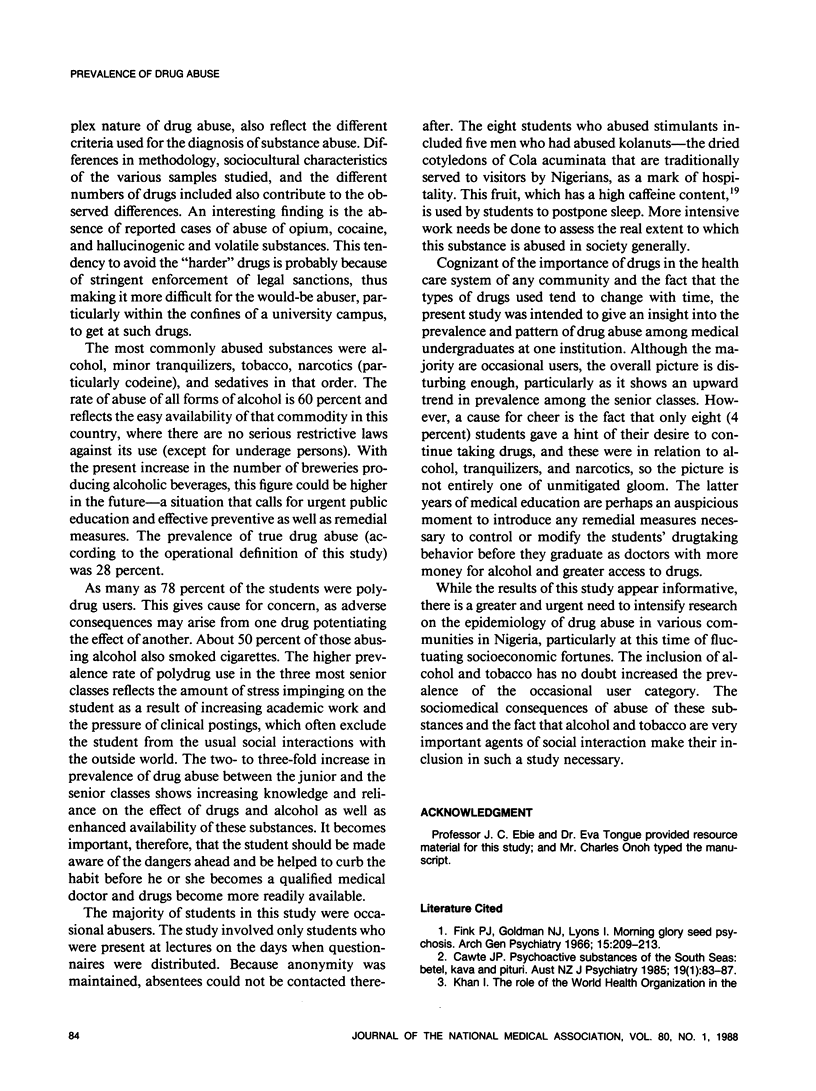
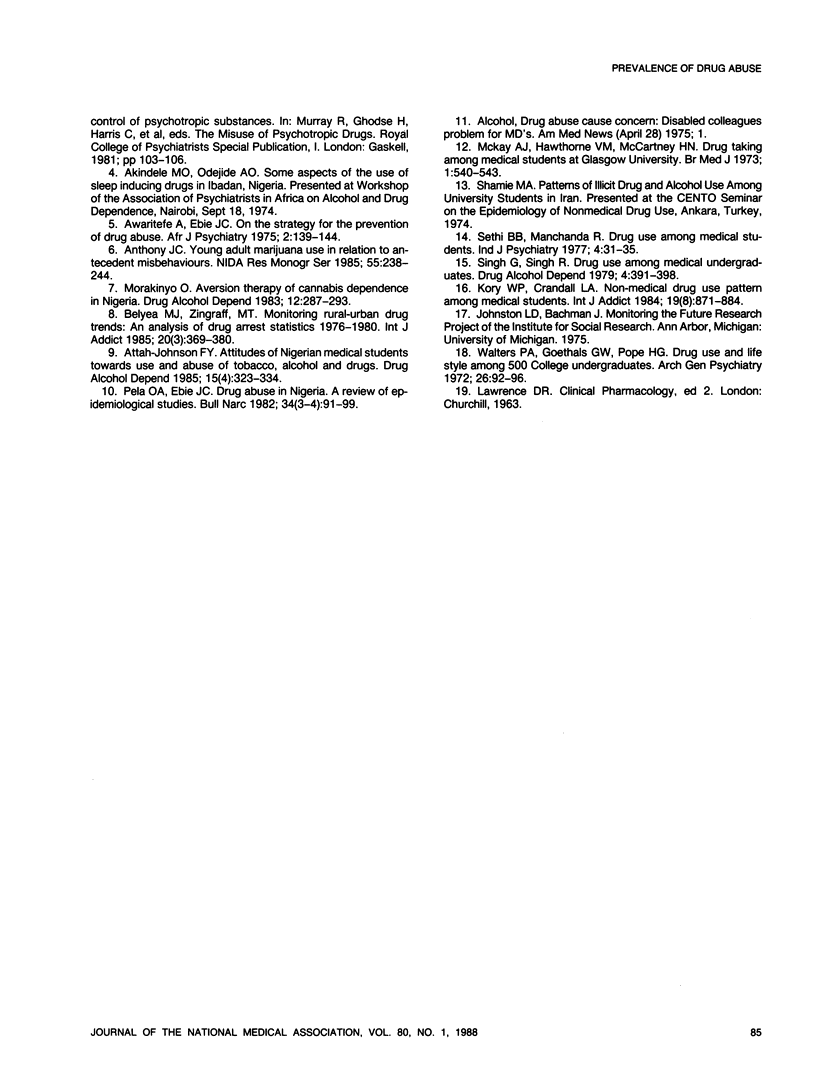
Selected References
These references are in PubMed. This may not be the complete list of references from this article.
- Anthony J. C. Young adult marijuana use in relation to antecedent misbehaviors. NIDA Res Monogr. 1984;55:238–244. [PubMed] [Google Scholar]
- Attah Johnson F. Y. Attitudes of Nigerian medical students towards use and abuse of tobacco, alcohol and drugs. Drug Alcohol Depend. 1985 Aug;15(4):323–334. doi: 10.1016/0376-8716(85)90009-2. [DOI] [PubMed] [Google Scholar]
- Belyea M. J., Zingraff M. T. Monitoring rural-urban drug trends: an analysis of drug arrest statistics 1976-1980. Int J Addict. 1985 Mar;20(3):369–380. doi: 10.3109/10826088509044919. [DOI] [PubMed] [Google Scholar]
- Cawte J. Psychoactive substances of the South Seas: betel, kava and pituri. Aust N Z J Psychiatry. 1985 Mar;19(1):83–87. doi: 10.3109/00048678509158818. [DOI] [PubMed] [Google Scholar]
- Kory W. P., Crandall L. A. Nonmedical drug use patterns among medical students. Int J Addict. 1984 Dec;19(8):871–884. doi: 10.3109/10826088409061992. [DOI] [PubMed] [Google Scholar]
- McKay A. J., Hawthorne V. M., McCartney H. N. Drug taking among medical students at Glasgow university. Br Med J. 1973 Mar 3;1(5852):540–543. doi: 10.1136/bmj.1.5852.540. [DOI] [PMC free article] [PubMed] [Google Scholar]
- Morakinyo O. Aversion therapy of cannabis dependence in Nigeria. Drug Alcohol Depend. 1983 Nov;12(3):287–293. doi: 10.1016/0376-8716(83)90072-8. [DOI] [PubMed] [Google Scholar]
- Pela O. A., Ebie J. C. Drug abuse in Nigeria: a review of epidemiological studies. Bull Narc. 1982 Jul-Dec;34(3-4):91–99. [PubMed] [Google Scholar]
- Singh G., Singh R. P. Drugs on a medical campus I. Drug use among medical undergraduates. Drug Alcohol Depend. 1979 Sep;4(5):391–398. doi: 10.1016/0376-8716(79)90071-1. [DOI] [PubMed] [Google Scholar]
- Walters P. A., Jr, Goethals G. W., Pope H. G., Jr Drug use and life-style among 500 college undergraduates. Arch Gen Psychiatry. 1972 Jan;26(1):92–96. doi: 10.1001/archpsyc.1972.01750190094017. [DOI] [PubMed] [Google Scholar]


